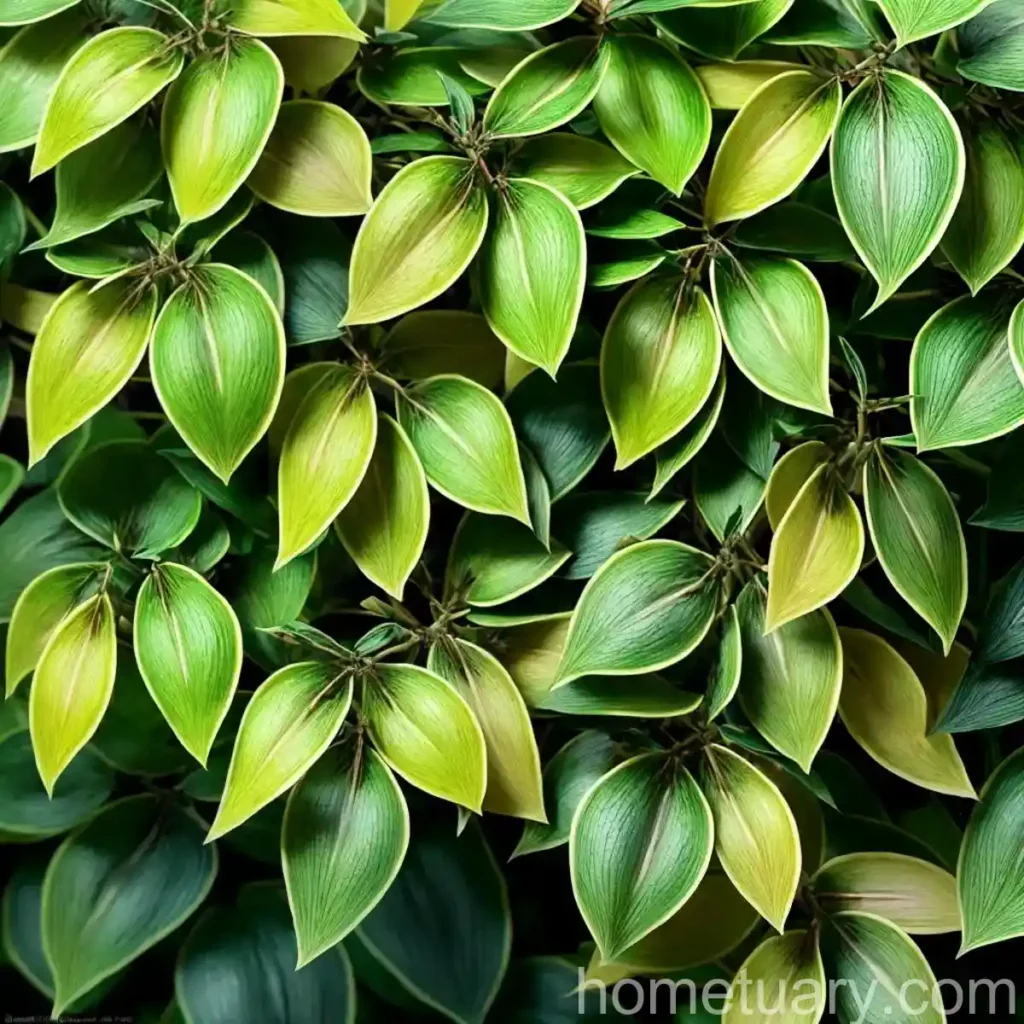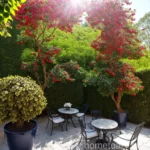Wintercreeper (Euonymus fortunei ‘Variegatus’): A Versatile Evergreen Ground Cover
Introduction
Plants play a crucial role in the environment, contributing to the beauty and function of ecosystems. Among the diverse array of plant species, the wintercreeper (Euonymus fortunei ‘Variegatus’) stands out as a versatile and resilient evergreen ground cover. This plant has gained popularity for its ornamental foliage, low-maintenance requirements, and adaptability to various environmental conditions. In this blog post, we will delve into the key aspects of wintercreeper, including its cultural requirements, uses, care tips, common diseases and pests, and fascinating botanical characteristics.
What is wintercreeper (Euonymus fortunei ‘Variegatus’)?
Wintercreeper, scientifically known as Euonymus fortunei ‘Variegatus’, is a species of evergreen plant belonging to the Celastraceae family. It is native to China, Korea, and Japan, and is widely cultivated for its decorative foliage and versatility in landscaping. The ‘Variegatus’ cultivar is noted for its striking variegated leaves, featuring a combination of green and creamy white or silver markings.
Key Takeaways – wintercreeper (Euonymus fortunei ‘Variegatus’)
- Scientific Name: Euonymus fortunei ‘Variegatus’
- Common Name: Wintercreeper
- Family: Celastraceae
- Growth Habit: Evergreen ground cover with trailing or climbing growth habits
- Foliage Characteristics: Variegated leaves with distinct patterns
- Adaptability: Thrives in various environmental conditions, including shade and urban settings
Culture
The culture of wintercreeper encompasses an understanding of its specific requirements for growth and development. This includes factors such as water, sunlight, soil, and fertilization.
Uses
Wintercreeper possesses a range of versatile uses in landscaping and garden design due to its adaptable nature and aesthetic appeal.
- Ground Cover: Its trailing or climbing growth habit makes it an excellent choice as a ground cover for both sunny and shaded areas.
- Erosion Control: The dense foliage and vigorous growth make wintercreeper an effective erosion control measure on slopes and embankments.
- Container Planting: It can be cultivated in containers and hanging baskets, adding a touch of greenery to patios and balconies.
- Accent Plant: The variegated foliage and compact growth habit make it an attractive accent plant in gardens and landscapes.
- Urban Landscapes: Its tolerance for urban conditions, such as air pollution and limited space, makes it a valuable addition to urban gardens and public spaces.
Water
Understanding the water requirements of wintercreeper is essential for its successful cultivation.
- Establishment Phase: During the initial establishment phase, adequate watering is crucial to promote root development and ensure the plant’s ability to withstand dry periods.
- Mature Plants: Once established, wintercreeper demonstrates good drought tolerance, making it suitable for low-water landscaping and xeriscaping projects.
- Avoid Waterlogged Soil: While the plant can tolerate dry conditions, it is important to avoid waterlogged soil, as excessive moisture can lead to root rot.
Sunlight
The sunlight requirements of wintercreeper play a significant role in determining its growth and foliage characteristics.
- Part Sun to Shade: Wintercreeper thrives in part sun to shade conditions, making it an excellent choice for shaded areas where many other plants struggle to grow.
- Leaf Variegation: While the plant can tolerate some sun, excessive exposure to intense sunlight may cause the variegated leaves to lose their distinct color patterns. Therefore, it is best suited for locations with dappled sunlight or partial shade.
Fertilizer
Proper fertilization can support the healthy growth and vigor of wintercreeper, ensuring lush foliage and robust establishment.
- Balanced Fertilizer: Applying a balanced, slow-release fertilizer in spring can provide the necessary nutrients for the plant’s growth and development.
- Avoid Excess Nitrogen: Excessive nitrogen fertilization can lead to rapid, weak growth and may compromise the plant’s overall health.
- Organic Amendments: Incorporating organic amendments into the soil can enhance its fertility and promote a sustainable nutrient supply for wintercreeper.
Soil
The soil type and quality significantly influence the growth and performance of wintercreeper, particularly in terms of drainage and nutrient availability.
- Well-Draining Soil: Wintercreeper thrives in well-draining soil that prevents waterlogging and root suffocation.
- Organic Matter: Incorporating organic matter, such as compost or leaf mold, can improve soil structure and fertility, supporting healthy root development.
- Neutral to Slightly Acidic pH: The plant prefers soil with a neutral to slightly acidic pH range, typically between 6.0 and 7.0.
Pruning
Pruning is an important aspect of wintercreeper care, enabling gardeners to shape the plant, control its growth, and maintain its aesthetic appeal.
- Regular Maintenance: Periodic pruning can help maintain a compact and tidy appearance, especially in container plantings and landscapes.
- Shape Control: Trimming the trailing or climbing stems can help shape the plant and prevent it from becoming invasive in certain settings.
- Landscape Design: Wintercreeper can be pruned to create low hedges, edging, or to cascade over retaining walls, adding visual interest and texture to the landscape.
Propagation
Understanding the methods of propagation allows for the expansion and dissemination of wintercreeper, offering diverse options for multiplying the plant.
- Stem Cuttings: Propagation through stem cuttings is a common and reliable method, where sections of healthy stems with nodes are rooted to produce new plants.
- Division: Dividing the root mass of established plants can yield new individuals, particularly when rejuvenating overgrown or congested clumps of wintercreeper.
- Layering: Air layering or ground layering can also be used to encourage the development of roots on stems, facilitating the production of new plants.
Container Popularity
Wintercreeper’s adaptability and low-maintenance nature make it a popular choice for container plantings, offering versatility and ornamental appeal in various settings.
- Patio Gardens: Cultivating wintercreeper in containers adds greenery and texture to outdoor living spaces, providing opportunities for creative arrangements and combinations with other plants.
- Balcony Plantings: Its trailing or climbing growth habit lends itself well to balcony gardens, where it can be trained to cascade over railing planters or trellises.
- Urban Landscaping: In urban environments, the use of containers allows for the incorporation of wintercreeper in rooftop gardens, courtyards, and public spaces.
Common Diseases
Although wintercreeper is generally resilient, it can be susceptible to certain diseases that may impact its health and appearance.
- Powdery Mildew: Fungal infection leading to a white, powdery growth on the leaves, often favored by high humidity and poor air circulation.
- Leaf Spot: Characterized by the presence of dark spots or lesions on the foliage, often caused by fungal pathogens in humid conditions.
- Root Rot: Excessive soil moisture can lead to root rot, affecting the plant’s ability to absorb water and nutrients.
Disease Diagnosis
Diagnosing and addressing plant diseases is vital for maintaining the health and vitality of wintercreeper.
- Observation: Regular inspection of the plant for any signs of abnormal growth, discoloration, or lesions can aid in early disease detection.
- Consultation: Seeking assistance from local horticultural experts or plant pathologists can help in accurately identifying the specific disease and determining suitable management strategies.
- Preventive Measures: Implementing preventive measures, such as promoting good air circulation and avoiding overwatering, can reduce the risk of diseases affecting wintercreeper.
Common Pests
In addition to diseases, wintercreeper may also face challenges from various pests that can affect its foliage and overall health.
- Scale Insects: The presence of scale insects on the leaves and stems may lead to yellowing, wilting, and a decline in plant vigor.
- Spider Mites: These tiny pests can cause stippling, webbing, and discoloration of the foliage, particularly under dry and hot conditions.
- Aphids: Aphids can colonize the new growth of wintercreeper, causing distortion and yellowing of the leaves.
Botanist’s Tips
As a plant scientist and enthusiast, here are some valuable tips for the successful cultivation and stewardship of wintercreeper:
- Site Selection: When choosing a location for planting or container cultivation, consider the specific sunlight and moisture requirements of wintercreeper, ensuring an environment conducive to its growth.
- Regular Monitoring: Periodic observation of the plant’s condition allows for early detection of potential issues, whether related to pests, diseases, or environmental stress.
- Sustainable Practices: Emphasize sustainable gardening practices, such as water conservation, organic fertilization, and integrated pest management, to support the long-term health of wintercreeper and the surrounding ecosystem.
- Community Engagement: Encourage community involvement in gardening and green initiatives, promoting the use of wintercreeper as a low-maintenance and environmentally friendly landscaping option.
Fun Facts
Uncover some intriguing and fascinating aspects of wintercreeper and its ecological significance.
- The variegated leaves of wintercreeper add visual interest to shaded areas, providing a splash of color and texture in gardens and landscapes.
- Wintercreeper’s ability to tolerate diverse environmental conditions, including shade, makes it a valuable plant for enhancing the biodiversity of urban and suburban settings.
- In addition to its ornamental value, wintercreeper contributes to soil stabilization and erosion control in natural and designed landscapes, showcasing its ecological importance.
Links to External Resources
Explore further information and resources related to wintercreeper, its cultivation, and its role in horticulture and landscaping:
- The American Society of Landscape Architects (ASLA)
- Royal Horticultural Society (RHS)
- University Extension Services
In conclusion, wintercreeper (Euonymus fortunei ‘Variegatus’) shines as a resilient and versatile evergreen ground cover, offering aesthetic appeal and functional benefits in diverse environments. By understanding its cultural requirements, uses, care practices, and ecological significance, gardeners and enthusiasts can appreciate and harness the potential of wintercreeper in enhancing landscapes, promoting biodiversity, and fostering sustainable gardening practices. Whether as a low-maintenance ground cover, a container specimen, or an accent plant in urban gardens, wintercreeper continues to leave a green and variegated impression on the world of landscape horticulture.
Reference:
National Gardening Association: Groundcovers and Vines















